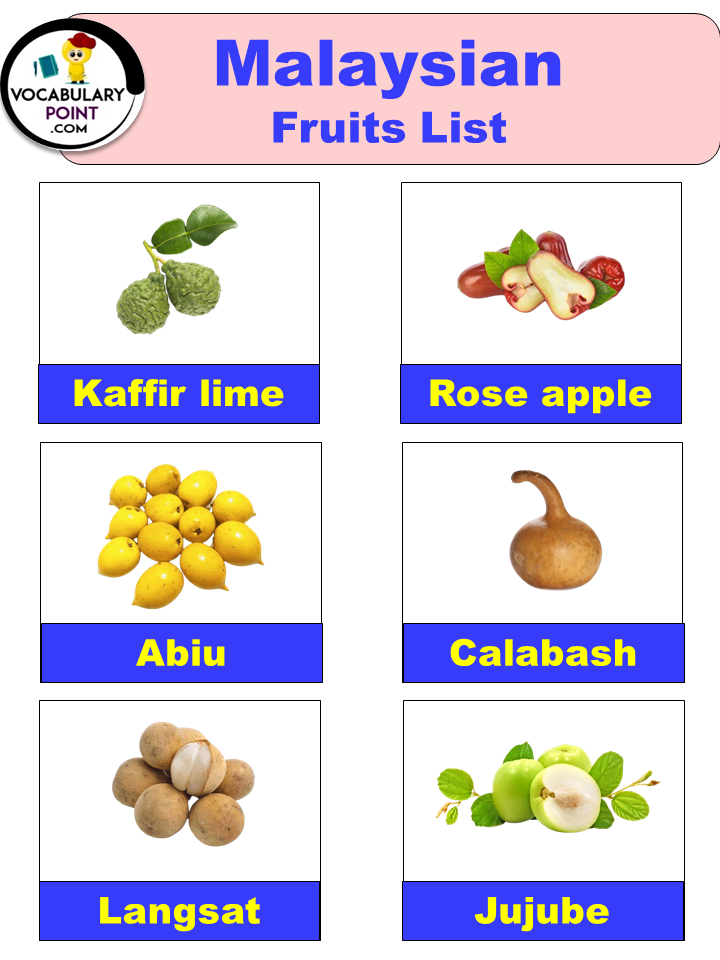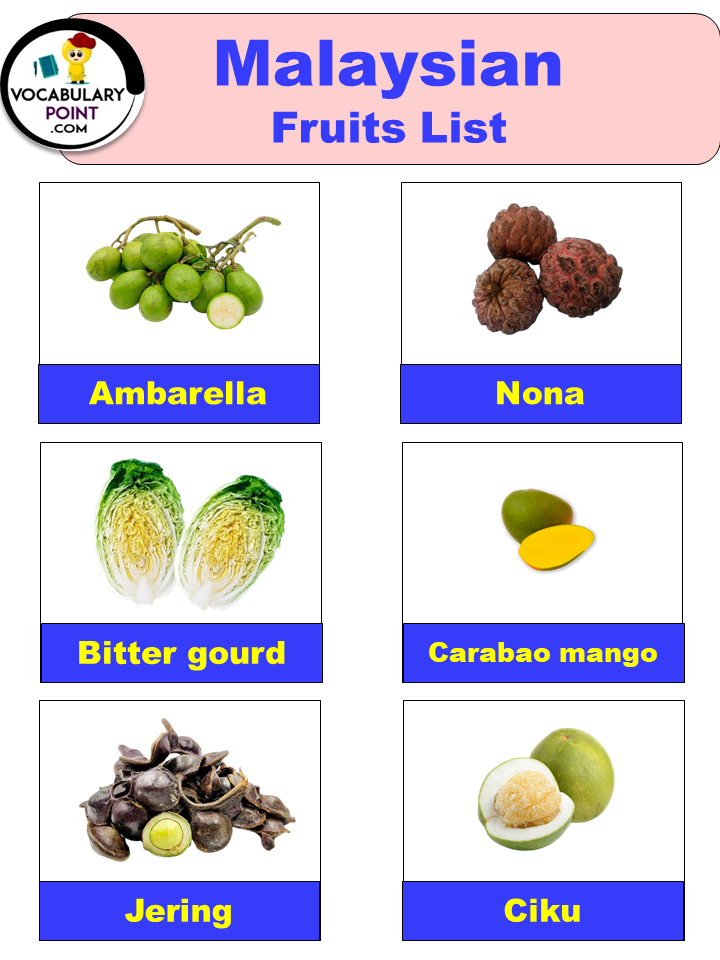Malaysia, a tropical paradise nestled in Southeast Asia, is not only renowned for its stunning beaches and rich cultural heritage but also for its diverse array of mouthwatering fruits. From the sweet and succulent durian to the tangy and refreshing rambutan, Malaysia boasts an extraordinary range of tropical fruits that will leave your taste buds dancing with delight.
List Of Malaysian Fruits
Black Sapote
A tropical fruit known for its chocolate pudding-like texture when ripe, often called the “chocolate pudding fruit.”
Cempedak
A tropical fruit closely related to jackfruit, with a sweet, aromatic flavor, eaten fresh or cooked.
White Sapote
A fruit with creamy texture and sweet flavor, often green-skinned, native to central Mexico and parts of Central America.
Chayote
A green, pear-shaped squash that belongs to the gourd family, eaten cooked or raw, with a crisp and mild flavor.
Musang King Durian
A premium variety of durian known for its creamy texture and strong aroma, highly prized in Southeast Asia.
Pomegranate
A fruit with a tough outer shell that encases sweet, juicy seeds, known for its health benefits and tart flavor.
Ceylon Olive
A small, tangy fruit native to South Asia, not closely related to true olives but eaten fresh or as a pickle.
Soursop
A tropical fruit with a spiky green exterior and soft, creamy texture inside, known for its sweet-sour flavor.
Belimbing (Bilimbi)
A small, sour fruit used primarily in cooking for its acidity, similar in use to tamarind in Southeast Asian cuisine.
Bitter Gourd
Also known as bitter melon, a vegetable with a distinctive bitter taste, used in Asian and African cuisines.
Tamarillo
A small tree fruit with a tangy flavor, also known as tree tomato, consumed cooked or raw.
Papaya
A tropical fruit with orange flesh and black seeds, known for its sweet taste and digestive benefits.
Santol
A tropical fruit with a cotton-like texture surrounding the seeds, eaten fresh or used in cooking.
Red Jambu
Also known as water apple, a crunchy and watery fruit, often pink or red, mildly sweet and refreshing.
Sapote
A term for several tropical fruits with sweet, custard-like flesh, including mamey sapote and black sapote.
Duku
A type of langsat fruit, with a thick skin and sweet, juicy segments inside, common in Southeast Asia.
Rambutan
A tropical fruit with hairy skin and translucent, juicy flesh around a central seed, sweet and aromatic.
Calabash
A large, hard-shelled fruit often used as a container or utensil when dried, not typically eaten.
Keledang
A fruit related to jackfruit and cempedak, with sweet, yellow, fibrous flesh, less commonly known.
Jering
A leguminous plant producing edible seeds with a distinctive taste, often eaten with rice in Malaysia.
Buah Kedondong (Ambarella)
A crunchy, tart fruit often eaten raw with salt or made into chutneys and jams, rich in vitamin C.
Passion Fruit
A small, round fruit with a hard outer rind and juicy, seed-filled interior, known for its intense, tropical flavor.
Salak (Snake Fruit)
A fruit with reddish-brown scaly skin and sweet, crunchy flesh, shaped like garlic cloves, native to Indonesia.
Kaffir Lime
A citrus fruit known for its distinctively rough, green skin and aromatic, flavorful leaves used in cooking.
Jujube
A small, red or brown fruit, often dried and eaten as a snack, sweet with a texture similar to dates.
Tampoi
A small, tropical fruit similar to mangosteen, with juicy, sweet segments inside a thick, orange skin.
Durian Kura Kura (Turtle Durian)
A rare type of durian with a hard shell, smaller and less pungent than common varieties, found in Borneo.
Banana
A staple fruit globally, available in many varieties, known for its soft, sweet flesh enclosed in a peel.
Srikaya
A fruit also known as sugar apple or sweetsop, with sweet, creamy flesh and a knobby green exterior.
Watermelon
A large, refreshing fruit with a green rind and juicy, sweet red flesh, containing black seeds.
Sapodilla
A tropical fruit with a grainy, sweet flesh, brown skin, and a flavor reminiscent of pears or brown sugar.
Candle Nut
A tropical nut used primarily in cooked dishes for its oil content, not eaten raw due to toxicity.
Lanzones
A tropical fruit with a translucent, juicy flesh and a sweet-tart flavor, encased in a thin, yellow skin.
Buah Duku
See Duku.
Ciku (Sapodilla)
See Sapodilla.
Mangosteen
A tropical fruit with a thick, purple rind and sweet, tangy white segments inside, known as the “queen of fruits.”
Durian
A large, spiky fruit famous for its strong smell and creamy flesh, considered a delicacy in Southeast Asia.
Longan
A small, round fruit with translucent flesh and a sweet flavor, similar to lychee, encased in a thin brown shell.
Buddha’s Hand
A fragrant, yellow citrus fruit with long, finger-like segments, primarily used for its zest and decorative purposes.
Ambarella
See Buah Kedondong (Ambarella).
Starfruit
A fruit with a distinctive star shape when cut, crunchy texture, and a sweet to tangy flavor.
Jengkol
A leguminous seed popular in Southeast Asian cuisine, known for its pungent smell and taste, eaten cooked.
Salak
See Salak (Snake Fruit).
Jackfruit
A large tropical fruit with sweet, yellow, fibrous flesh, used both ripe in desserts and unripe in savory dishes.
Sweetsop
See Srikaya.
Ciku
See Sapodilla.
Carabao Mango
A sweet, yellow mango variety from the Philippines, known for its buttery texture and delicious flavor.
Keranji
A small, sweet fruit native to Southeast Asia, similar in appearance to a tamarind but with a sweeter taste.
Langsat
A small, round, tropical fruit with translucent, juicy flesh and a sweet-tart flavor, encased in thin, yellow skin.
Baccaurea Macrocarpa (Kundang)
A tropical fruit with a tart flavor, often eaten raw or made into a refreshing drink.
Semangka Hijau (Green Melon)
A type of watermelon with green flesh, known for its crisp texture and refreshing taste.
Cactus Fruit
Also known as prickly pear, a fruit with a spiky outer skin and sweet, seedy flesh, varying in color.
Chempedak
See Cempedak.
Nona
Also known as custard apple, similar to srikaya but with a different texture and taste, creamy and sweet.
Abiu
A tropical fruit with a smooth, yellow skin and sweet, custard-like flesh, native to the Amazon region.
Buah Delima (Pomegranate)
See Pomegranate.
Pomelo
A large citrus fruit with a thick, green or yellow rind and sweet, tangy flesh, larger than a grapefruit.
Kesemek
Also known as persimmon, a fruit with a sweet, honey-like flavor when ripe, eaten fresh or dried.
Velvet Tamarind
A small, tropical fruit with a velvety shell and sweet-sour pulp, often eaten as a snack.
Bambangan
A mango-like fruit native to Borneo, with a sour taste, used in local cuisines as a condiment or eaten raw.
Pulasan
Similar to rambutan, but with a sweeter taste and thicker skin, containing juicy, sweet segments.
Breadfruit
A large, starchy fruit, used as a vegetable in tropical regions, eaten when cooked, similar to potatoes.
Dragon Fruit
A brightly colored fruit with a speckled, white or red flesh, known for its mild, sweet taste and kiwi-like texture.
Wild Raspberry
A small, red berry, similar to cultivated raspberries but smaller and more tart, found in the wild.
Rose Apple
A bell-shaped fruit with a crisp, watery flesh, lightly sweet and aromatic, often eaten fresh.
Indian Almond
A tropical tree producing edible nuts known for their almond-like taste, not related to true almonds.
Pineapple
A tropical fruit with a rough, diamond-patterned skin and sweet, tangy flesh, known for its juicy flavor.
Roselle
A species of Hibiscus used for its edible leaves and calyces, the latter often made into teas and jams.
Guava
A tropical fruit with a green or yellow skin and pink or white flesh, eaten fresh or used in beverages.
Lemon
A bright yellow, sour citrus fruit, widely used for its juice, zest, and as a flavoring in various dishes.
Lychee
A small, tropical fruit with a rough, red skin and sweet, fragrant flesh surrounding a large seed.
Wax Apple
A tropical fruit with a bell shape, crunchy and juicy, with a light sweet taste, also known as bell fruit.
Purple Mangosteen
See Mangosteen.
Champedak
A fruit related to jackfruit and cempedak, with a similar texture and flavor, less commonly known.
Garcinia Hombroniana
Also known as seashore mangosteen, a tropical fruit with a sour taste, used in traditional medicine and cooking.
Explore More Fruits Names:
Green Fruits | Berries Fruits | Seedless Fruits
Malaysian Fruits Names
Ambarella
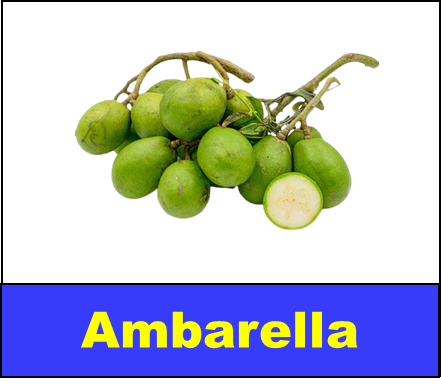
- Rich in Vitamin C:
Ambarella is a good source of vitamin C, which is essential for a healthy immune system. Consuming ambarella can help your body fight off infections and maintain overall well-being.
- Aid in Digestion:
Ambarella contains dietary fiber and natural enzymes that can aid in digestion. It may help prevent constipation and promote a healthy digestive system.
- Antioxidant Properties:
Ambarella has antioxidants that can help protect your cells from oxidative damage and reduce the risk of chronic diseases. Including ambarella in your diet may contribute to overall health.
Nona
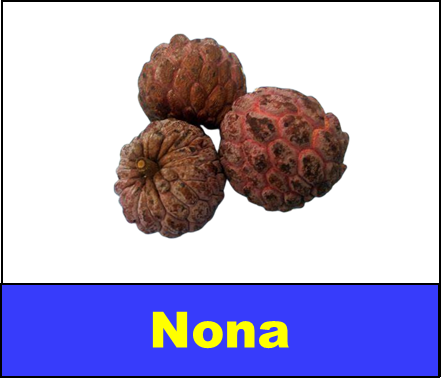
- Rich in Vitamins:
Nona is a good source of vitamins, including vitamin C and vitamin B6. These vitamins play a vital role in immune support, skin health, and nerve function.
- Dietary Fiber:
Nona is high in dietary fiber, which aids in digestion and helps maintain regular bowel movements. Consuming nona can contribute to a healthy digestive system.
- Antioxidant Properties:
Nona contains antioxidants like vitamin C and various phytonutrients that can help protect your cells from oxidative damage and reduce the risk of chronic diseases. Incorporating nona into your diet may support overall health.
Bitter gourd
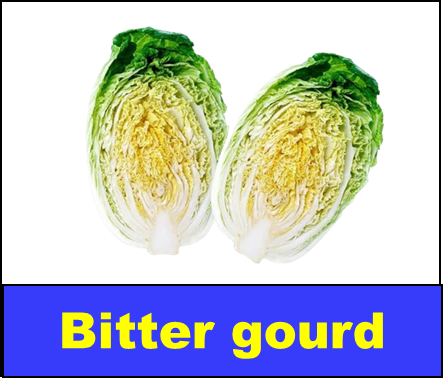
- Blood Sugar Control:
Bitter gourd contains compounds that may help regulate blood sugar levels, making it beneficial for individuals with diabetes or those at risk of developing diabetes.
- Weight Management:
Bitter gourd is low in calories and rich in dietary fiber, which can aid in weight management by promoting a feeling of fullness and reducing calorie intake.
- Antioxidant Properties:
Bitter gourd is a good source of antioxidants, such as vitamin C and various phytonutrients. These antioxidants can help protect your cells from oxidative damage and reduce the risk of chronic diseases. Incorporating bitter gourd into your diet may support overall health.
Carabao mango
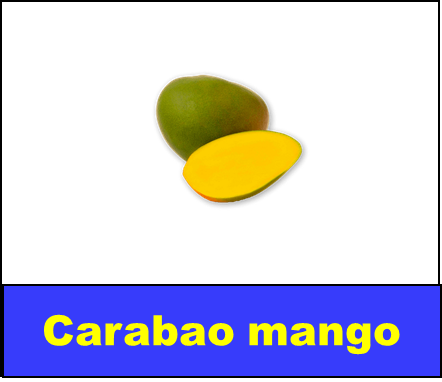
- Rich in Vitamins:
Carabao mangoes are abundant in vitamins, particularly vitamin C and vitamin A. These vitamins are essential for a strong immune system, healthy skin, and proper vision.
- Dietary Fiber:
Carabao mangoes are a good source of dietary fiber, which aids in digestion and helps prevent constipation. Including Carabao mangoes in your diet can promote a healthy digestive system.
- Antioxidant Properties:
Carabao mangoes contain antioxidants like beta-carotene and phenolic compounds, which can help protect your cells from oxidative damage and reduce the risk of chronic diseases. Consuming Carabao mangoes may contribute to overall health.
Jering
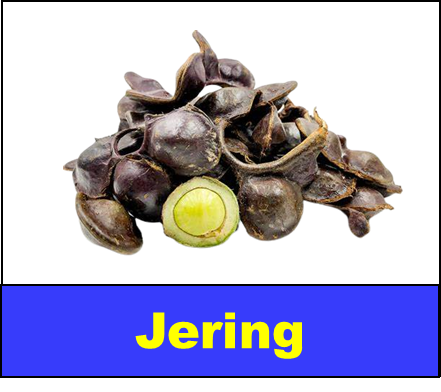
- Rich in Vitamins and Minerals:
Jering is a good source of various vitamins and minerals, including vitamin C, potassium, and iron, which are important for overall health and well-being.
- Dietary Fiber:
Jering is high in dietary fiber, which aids in digestion, promotes regular bowel movements, and can help maintain a healthy digestive system.
- Antioxidant Properties:
Jering contains antioxidants and phytonutrients that may help protect your cells from oxidative damage and reduce the risk of chronic diseases. Incorporating jering into your diet may support overall health.
Ciku
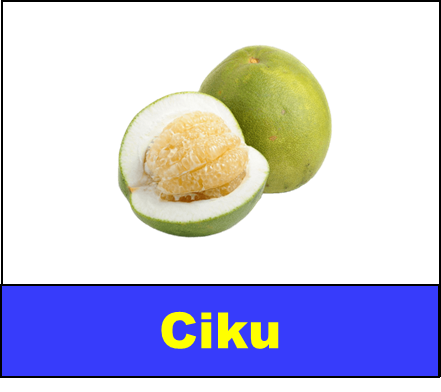
- Rich in Vitamins and Minerals:
Ciku is a good source of essential vitamins and minerals, including vitamin A, vitamin C, potassium, and iron, which are important for overall health and well-being.
- Dietary Fiber:
Ciku is high in dietary fiber, which aids in digestion, promotes regular bowel movements, and can help maintain a healthy digestive system.
- Antioxidant Properties:
Ciku contains antioxidants and phytonutrients that may help protect your cells from oxidative damage and reduce the risk of chronic diseases. Incorporating ciku into your diet may support overall health.
Kaffir lime
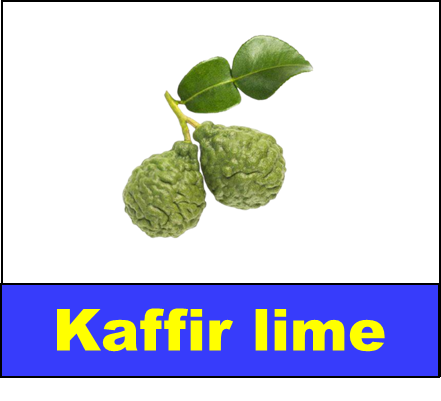
- Rich in Essential Oils:
Kaffir lime leaves and peels contain essential oils that have antibacterial and antifungal properties. They can be used in traditional medicine and skincare products for their therapeutic benefits.
- Aromatherapy:
The scent of Kaffir lime leaves and essential oils is known for its refreshing and uplifting properties. It can be used in aromatherapy to reduce stress, anxiety, and promote relaxation.
- Culinary Use:
Kaffir lime leaves and zest are used as flavor enhancers in various dishes, especially in Thai and Southeast Asian cuisine. They add a unique citrusy aroma and flavor to curries, soups, and salads.
Rose apple
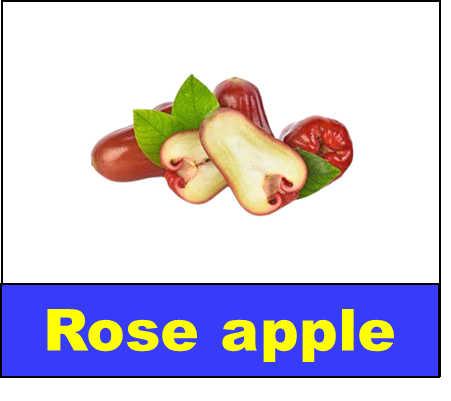
- Rich in Vitamins and Minerals:
Rose apples are a good source of essential vitamins and minerals, including vitamin C, vitamin A, potassium, and dietary fiber, which contribute to overall health and well-being.
- Dietary Fiber:
Rose apples are high in dietary fiber, which aids in digestion, promotes regular bowel movements, and helps maintain a healthy digestive system.
- Antioxidant Properties:
Rose apples contain antioxidants and phytonutrients that can help protect your cells from oxidative damage and reduce the risk of chronic diseases. Including rose apples in your diet may support overall health.
Abiu
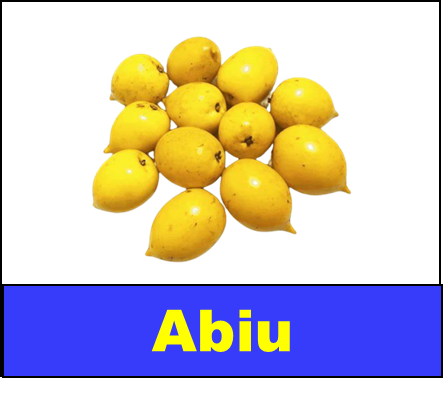
- Rich in Vitamins and Minerals:
Abiu is a good source of essential vitamins and minerals, including vitamin C, vitamin A, potassium, and calcium, which are important for overall health and well-being.
- Dietary Fiber:
Abiu is high in dietary fiber, which aids in digestion, promotes regular bowel movements, and helps maintain a healthy digestive system.
- Antioxidant Properties:
Abiu contains antioxidants and phytonutrients that may help protect your cells from oxidative damage and reduce the risk of chronic diseases. Consuming abiu may support overall health.
Calabash
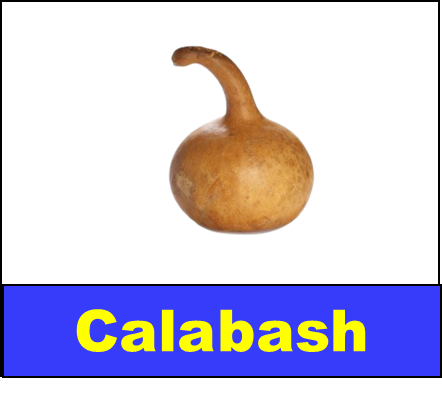
- High in Nutrients:
Calabash is a nutritious fruit, containing essential vitamins and minerals such as vitamin C, vitamin B6, potassium, and dietary fiber. These nutrients are vital for overall health and well-being.
- Digestive Health:
The dietary fiber content in calabash can aid in digestion and promote regular bowel movements. It helps maintain a healthy digestive system and can prevent constipation.
- Antioxidant Properties:
Calabash contains antioxidants and phytonutrients that can help protect your cells from oxidative damage, reduce inflammation, and lower the risk of chronic diseases. Incorporating calabash into your diet may support your overall health.
Langsat
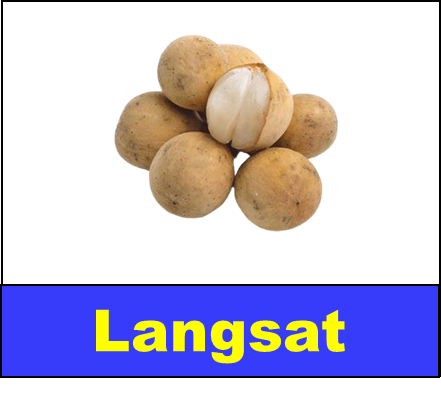
- Rich in Nutrients:
Langsat is a nutritious fruit, containing essential vitamins and minerals such as vitamin C, vitamin A, potassium, and dietary fiber. These nutrients are crucial for overall health and well-being.
- Digestive Health:
The dietary fiber content in langsat can aid in digestion and promote regular bowel movements. It helps maintain a healthy digestive system and can prevent constipation.
- Antioxidant Properties:
Langsat contains antioxidants and phytonutrients that can help protect your cells from oxidative damage, reduce inflammation, and lower the risk of chronic diseases. Incorporating langsat into your diet may support your overall health.
Jujube
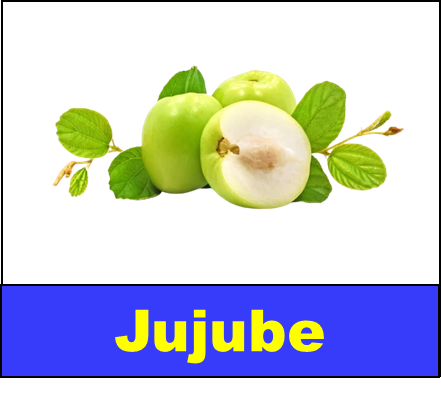
- Rich in Antioxidants:
Jujubes are packed with antioxidants, which help protect your cells from oxidative stress and reduce the risk of chronic diseases.
- Aid in Digestion:
Jujubes contain dietary fiber, which aids in digestion and helps prevent constipation. Consuming jujubes can promote a healthy digestive system.
- Stress Reduction:
Jujubes are known for their potential to help reduce stress and anxiety. They contain certain
compounds that may have a calming effect and promote relaxation when consumed regularly.
